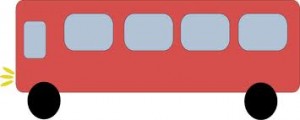Reward Charts
I often talk about the benefits of reward charts and jars with parents who use the Parent Advice Service, and on Parent Talk each week.
I’ve had lots of parents emailing me saying how easy the charts I’ve shared with them are to make, and what a huge difference they’ve made to their children’s behaviour, so thought I’d share them here with you all!
Here are my top reward chart ideas (I have plenty more but will add them over time!)
 Reward Jar
Reward Jar
Things needed:
Jam jar or similar jar
Beads, Buttons or pebbles
How to:
1. Fill the jar with a few pebbles or buttons, (the ones already in the jar are there incase you need to remove some before you’ve added any!)
2. Explain to your child what the jar is all about. Talk about behaviour that’s great and what’s not so great!)
3. Everytime there is good behaviour pop a pebble in the jar. When there is 20 (or however many you decide) a treat is gained! It doesn’t have to be anything expensive – perhaps a teddy bears picnic tea in the living room, a magazine, a colouring book and crayons, a trip to the park etc whatever you think your child might want to work towards.
4. Everytime the behaviour is negative you remove a bean. You’ll find they learn and begin to like the idea very quickly. Behaviour is often improved considerably after only a few ‘pebble removals.’
5. Remind and reward all the time – if you can see something is about to happen, remind them about the jar. Often a reminder is enough to change behaviour!
6. Respond to good behaviour in an exagerrated way with very little ones – clap, cheer say how wonderful they are, for example; “How very lovely of you to share that toy”
 Rocket Reward Chart
Rocket Reward Chart
Things needed:
Large piece of paper or card
Small piece of card
Crayons or paints
Scissors
Blu-tac
Glue
Glitter
How to:
1. On the large piece of card, draw 20 stars leading up to a big moon. This is ‘Treat Moon’ so make it sparkly and shiny and exciting!
2. On the smaller piece of card, draw a rocket and cut out.
3. Place the rocket on the bottom star. The idea is to work up towards ‘Treat moon’ (Same concept as the reward jar) Moving up towards the moon for good behaviour but sliding down for negative behaviour.
 Reward bus
Reward bus
Things needed:
Large piece of paper or card
Small piece of card
Crayons or paints
Scissors
Blu-tac
How to:
1. On the large piece of card, draw a large bus with 20 windows! Colour/paint and make it super funky!
2. On the smaller piece of card, draw 20 faces (these can be family members or favourite TV characters) and cut out.
3. Place the faces near the bus. The idea is to work up towards a treat (Same concept as the reward jar) by filling the bus. A full bus means top treat. The nice idea about the bus is you can fill it half way and have a half full bus treat too!
The idea is the same as the other charts – Good behaviour a passenger is added to the bus, negative behaviour they get taken off!
 Sunshine Chart
Sunshine Chart
This chart is great for toilet training as the sun resembles dryness! (Keeping pants dry!)
Things needed:
Large piece of paper or card
Small piece of card
Crayons or paints
Scissors
Blu-tac
Glue
Glitter
How to:
1. On the large piece of card, draw a round circle (this is the sun) and colour yellow
2. On the smaller piece of card, draw ‘rays’ – You can even use handprints for this depending on how large your sunshine is!
3. Place the rays near the sun. The idea is to work up towards a full sunshine! Same concept as the other charts.
Use your imagination…
Reward charts can be made of anything, about anything and are fantastic for encouraging good behaviour or achieving special things (toilet training, completing homework each night etc)
for a reward chart to really work, you need to be continuous in rewarding and removing things on the chart.
Avoid idle threats – It won’t help you child understand the concept of the chart if you threaten to remove a ray of sunshine from their sun chart and never carry it out. Often having something removed really encourage them to try harder.
Reward charts are fantastic to use with any age, but best from 3 years. younger children may find it hard to understand them fully.
Reward charts are great to use as a family – Have fun!
Daddy said a naughty word? Remove a pebble from the treat jar! Working towards something together with older children is a great way of children learning that grown-ups make mistakes too and encourages working together as a family!
